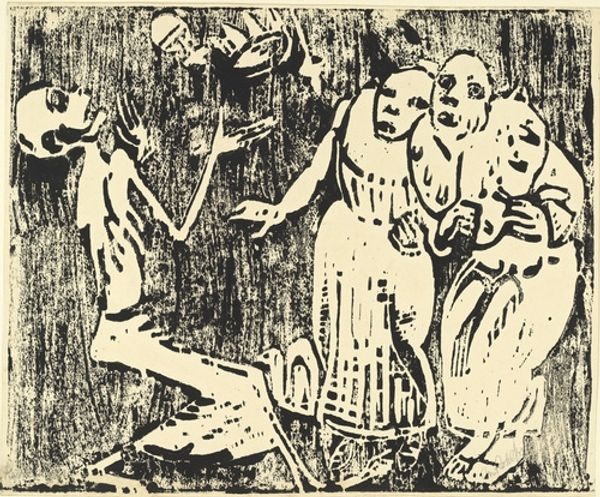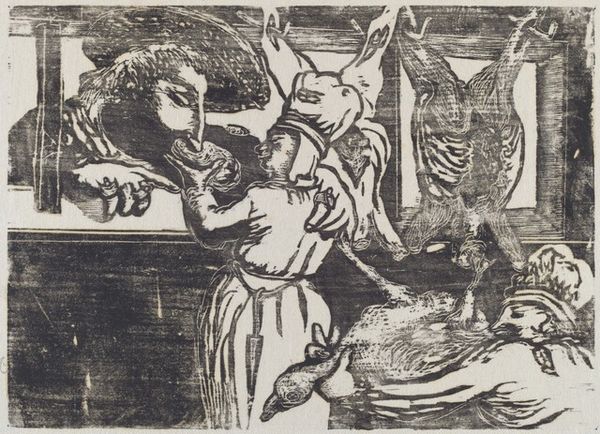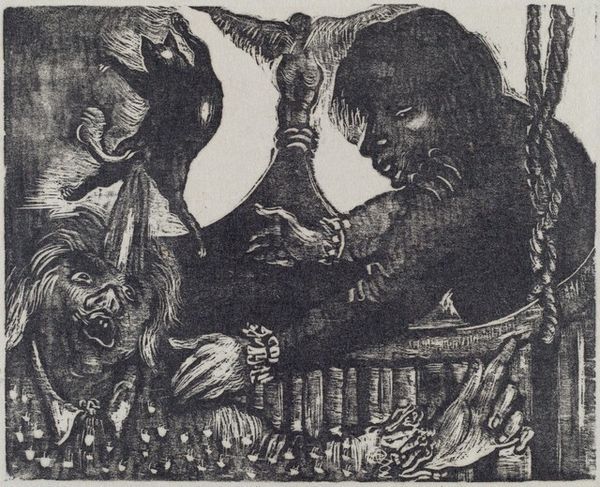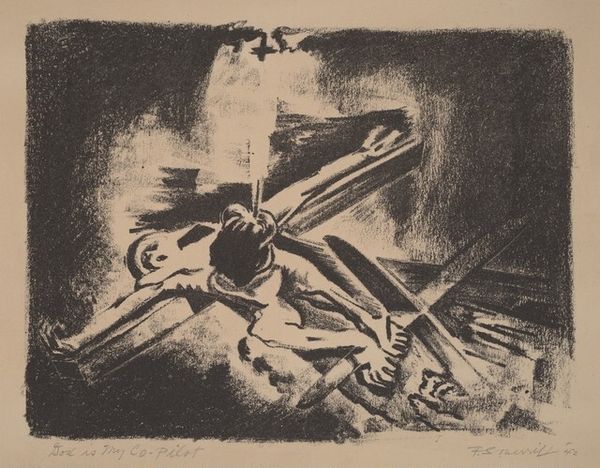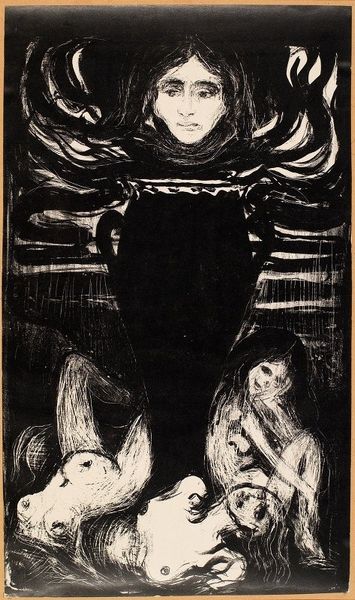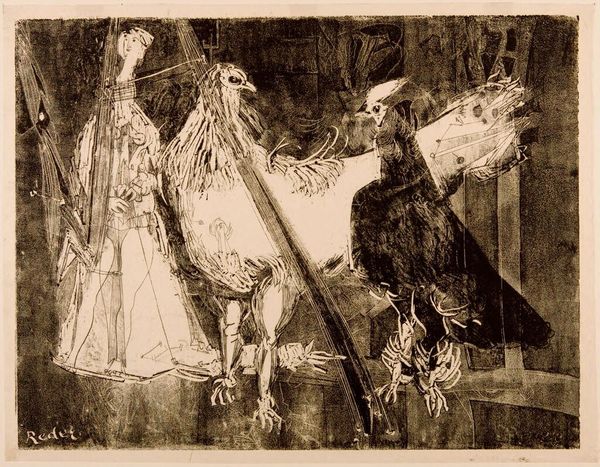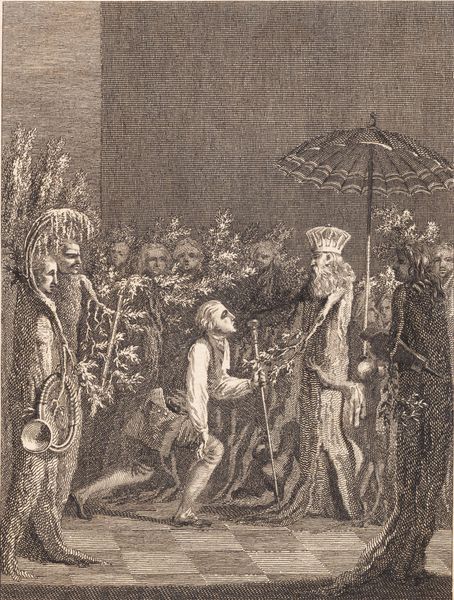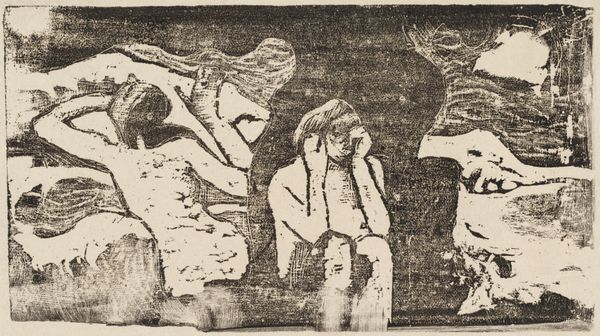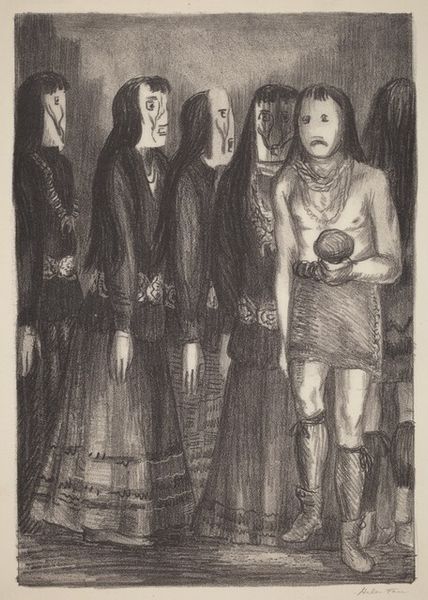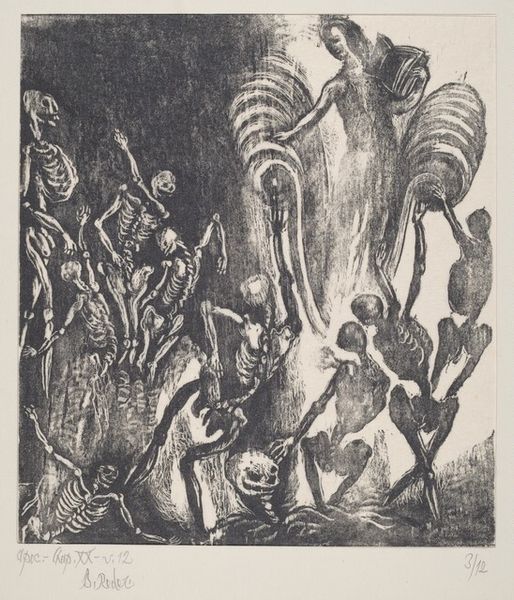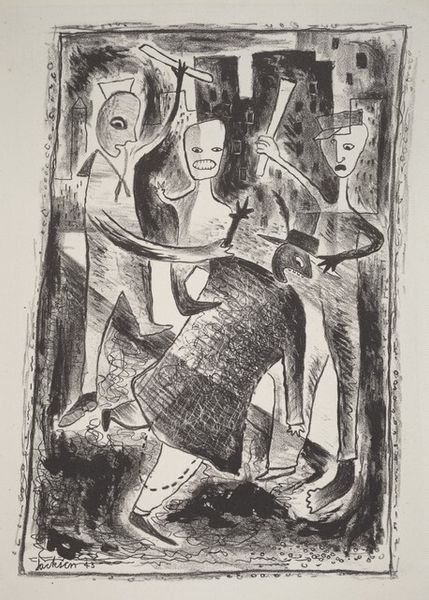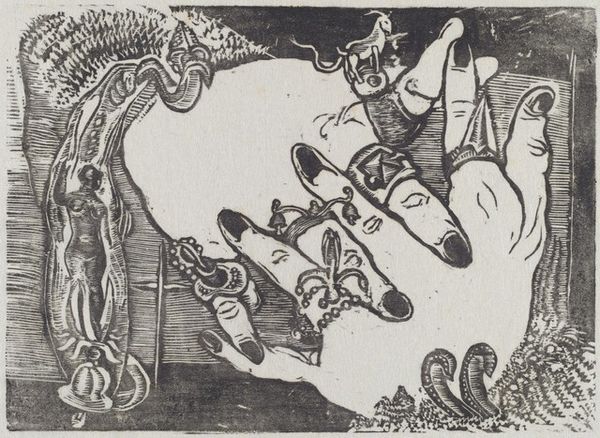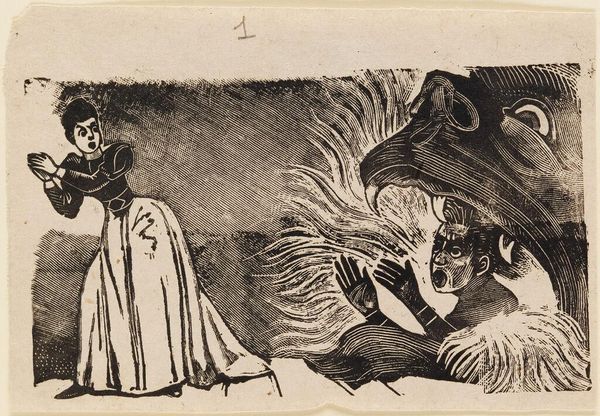![Death as Juggler (Revolution) (Tod als Jongleur [Revolution]) by Christian Rohlfs](/_next/image?url=https%3A%2F%2Fd2w8kbdekdi1gv.cloudfront.net%2FeyJidWNrZXQiOiAiYXJ0ZXJhLWltYWdlcy1idWNrZXQiLCAia2V5IjogImFydHdvcmtzLzI3ZDE2OTMxLTZhN2EtNGU0OS1iOTUzLTdiOGRjNGNjNzIzZS8yN2QxNjkzMS02YTdhLTRlNDktYjk1My03YjhkYzRjYzcyM2VfZnVsbC5qcGciLCAiZWRpdHMiOiB7InJlc2l6ZSI6IHsid2lkdGgiOiAxOTIwLCAiaGVpZ2h0IjogMTkyMCwgImZpdCI6ICJpbnNpZGUifX19&w=1920&q=75)
Death as Juggler (Revolution) (Tod als Jongleur [Revolution]) 1918 - 1919
0:00
0:00
print, woodcut
#
ink drawing
#
narrative-art
# print
#
pen illustration
#
figuration
#
expressionism
#
woodcut
#
monochrome
Dimensions: 14 5/16 × 17 5/16 in. (36.35 × 43.97 cm) (sheet)
Copyright: No Copyright - United States
Christian Rohlfs made this woodcut, "Death as Juggler", and in it, he didn't mix any colors, just the contrast between the stark black and white to do all the work, like life and death, or revolution and calm. You can almost smell the wood from the print, can't you? See how the grainy texture gives everything a rough, unsettled feeling? It's like Rohlfs is scratching the surface to reveal something raw. And those figures, all huddled together, but their faces? They're like masks, carved out with the same blunt force as the rest of the scene. The image is almost like a dance. I particularly love the way the lines around the juggler’s bones make a kind of pattern that reminds me of the way a kid draws a skeleton, all wonky, but full of energy. I think about other artists, like Kathe Kollwitz, who were also wrestling with similar ideas about life and death. What do you think? Are we making progress, or just juggling the same old bones?
Comments
minneapolisinstituteofart about 2 years ago
⋮
World War I threw the German Expressionist artist Chrisitan Rohlfs into a state of despair. He turned to traditional subjects that conveyed both loss and hope. He also amplified the abstract mark-making in his images. Death as a Juggler exhibits these tendencies. The juggling skeleton shocking his audience is a Dance of Death motif, rooted in images such as the dancing skeletons in the Nuremburg Chronicle (1493) and Hans Holbein’s extended cycle of woodcuts (1538). Rohlfs’s image combines humor and horror. Death juggles symbols of power: a crown, an imperial orb, and a scepter. Though Rohlfs’s rendering is sketchy, we can tell that the two recoiling women are well fed and well dressed. Rohlfs’s sardonic humor lampoons the helplessness of authority in the world of 1918, when Death added Spanish flu to the ravages of war. Rolhfs is at his most interesting as a printmaker when he dispenses with graphic clarity. Here he inks the block very unevenly. Much of the surface is filled with irregular striations and spots that breakup the darkness. Rohlfs may have printed this without a press, instead using implements such as a wooden spoon and a stiff brush to apply pressure to the verso of the paper in a manner that caused selective uptake of the ink on the block. The result is an image of exceptional dynamism. The striations dance across the page, and the broken light produces an eerie nighttime effect.
Join the conversation
Join millions of artists and users on Artera today and experience the ultimate creative platform.
